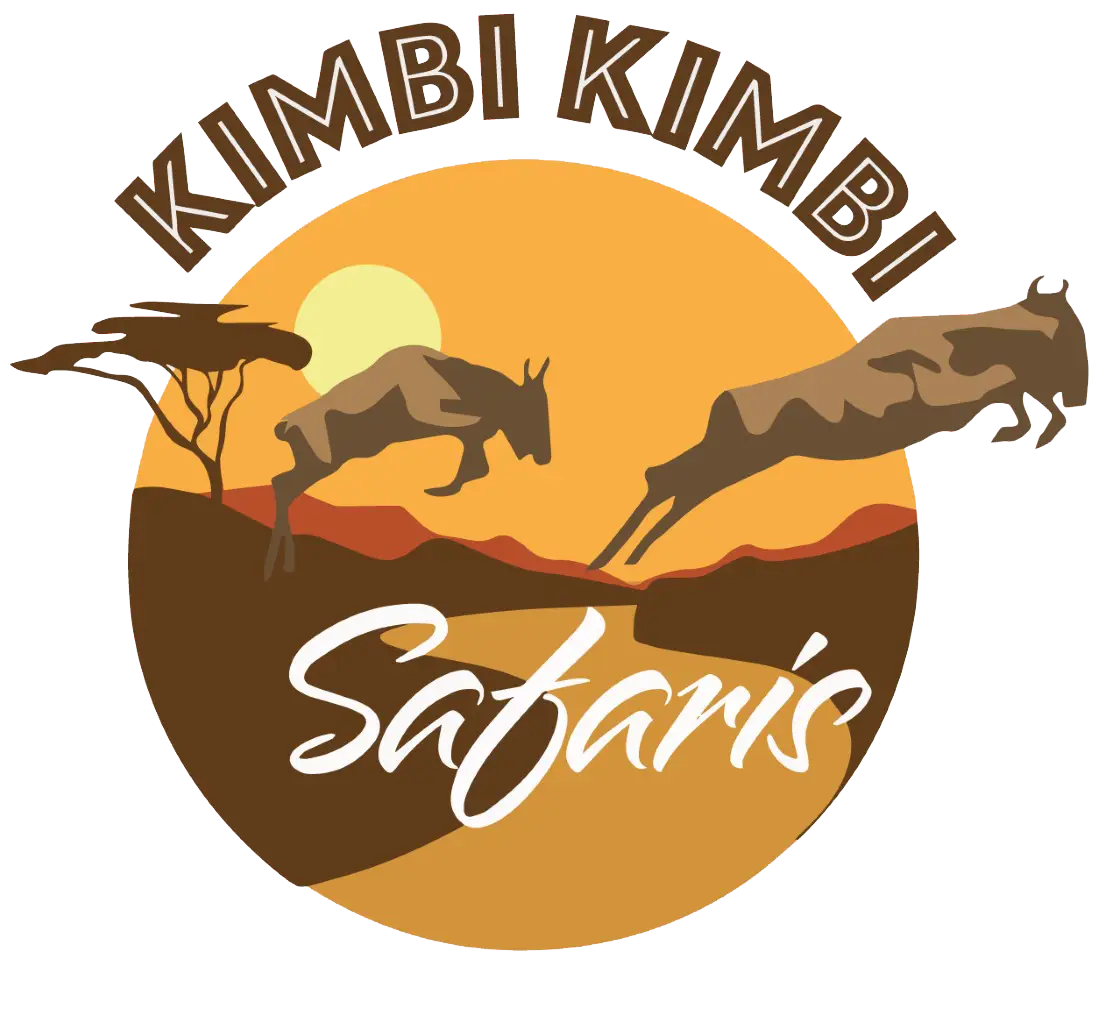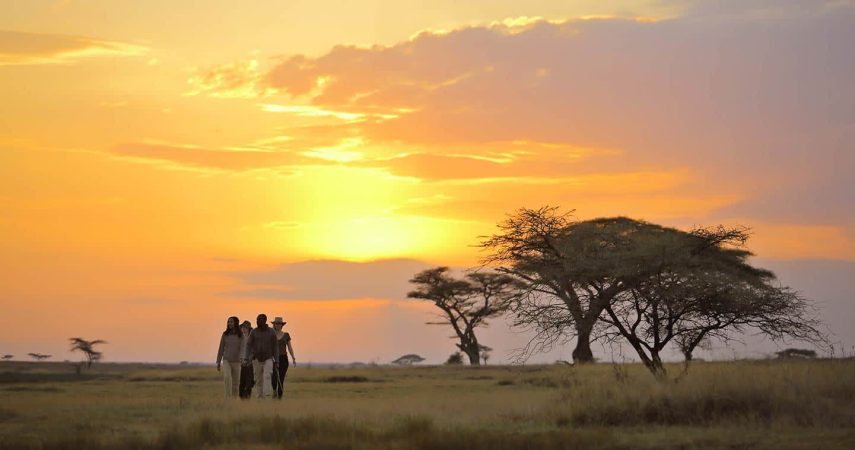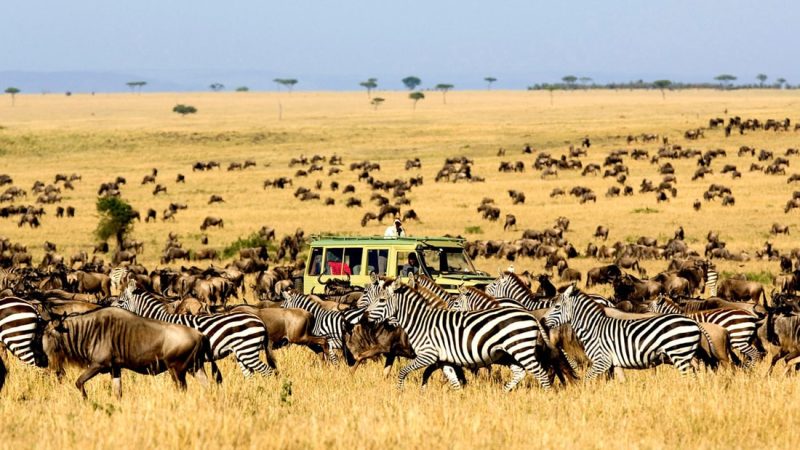SERENGETI NATIONAL PARK
Overview
Established in 1940, Serengeti National Park is located in eastern Mara Region and Northeastern Simiyu Region and contains over 1.5 million hectares of virgin savanna. The name “Serengeti” is an approximation of the word Siringet used by the Maasai people for the area, which means “the place where the land runs on forever”. The Serengeti is well known for the largest annual animal migration in the world of over 1.5 million blue wildebeest and 250,000 zebra along with smaller herds of Thomson’s gazelle and eland. It is also home to the largest number of lion population in Africa.
The landscape of the Serengeti Plain is extremely varied, ranging from savannah to hilly woodlands to open grasslands. The region’s geographic diversity is due to the extreme weather conditions that plague the area, particularly the potent combination of heat and wind. The diverse habitats in the region may have originated from a series of volcanoes, whose activity shaped the basic geographic features of the plain by adding mountains and craters to the landscape. The Mara River, which flows through Maasai Mara National Reserve from the Kenyan highlands to Lake Victoria, is the only permanently-flowing river in the Serengeti ecosystem




